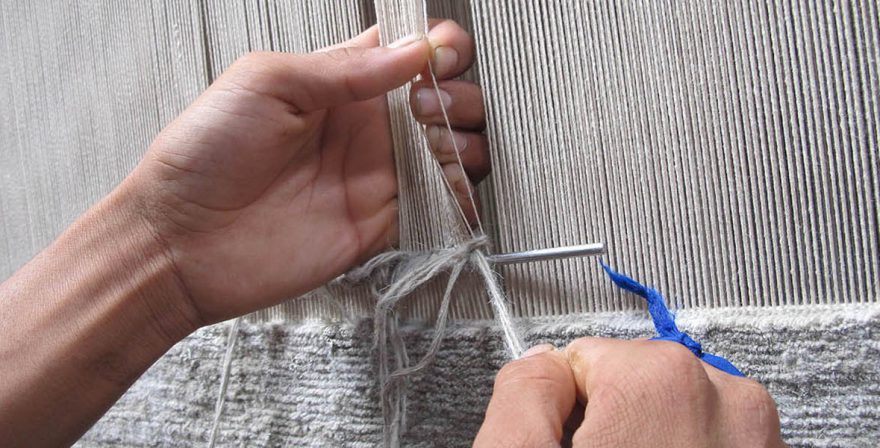The history of Tibetan carpet weaving stretches as far back as the 7th century AD and beyond. Initially, the major centres of carpet weaving were Wangden and later, Gyangtse. These were owned by local aristocratic families. From its heyday in the 19th and early 20th century the Tibetan carpet industry fell into serious decline in the second half of the 20th. Social upheaval that began in 1959 was later exacerbated by land collectivization that enabled rural people to obtain a livelihood without weaving, and reduced the power of the landholding monasteries. Many of the aristocratic families who formerly organized the weaving fled to India and Nepal during this period, along with their money and management expertise.
Much of the credit for the revival of the Tibetan carpet industry must go to the Swiss Agency for Technical Assistance (SATA) for their financial and technical support to the Tibetan refugees re-settlement programs. Initially, it was launched as a means of providing a livelihood for the Tibetan refugees and marketing was limited to tourists. This all changed in 1964, when efforts to break into the export market paid off when the first commercial shipment left for Switzerland. When Tibetan carpet weaving began to grow and expand in the 1970’s it was not in Tibet, but rather in Nepal and India. The first western accounts of Tibetan carpets and their designs were written around this time, based on information gleaned from the exiled Tibetan communities.
Today, many Tibetan carpet workshops have sprung up all over Nepal, providing much needed employment to thousands of both Tibetan and Nepalese weavers and as a result, export, trade and tourism in Nepal has flourished as Tibetan carpets started to attract greater international attention. Originally,Tibetan carpets promoted from Nepal were characterized in matching colors, mainly in camel, beige and coral pattern induced with Tibetan cultural values, however, todays carpets are produced in a multitude of different designs and colors, while still maintaining the traditional methods of production. Nepal has finally become well known for manufacturing and exporting hand made traditional Tibetan carpets all around the world and the industry is now recognised as a major contributor to the Nepalese economy and continues to grow with every passing year.

